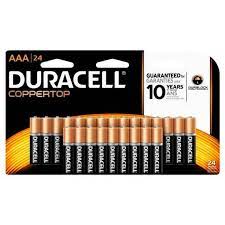Is a 14500 Battery the Same as an AA Battery?
When navigating the world of batteries, it’s easy to get confused by the myriad of types and sizes available. Among the most commonly used batteries are the AA and the 14500. While they may seem similar, especially because the 14500 battery is often compared to the AA, there are key differences that can impact their suitability for various applications. This blog will explore these differences and help clarify whether a 14500 battery is the same as an AA battery.
What is a 14500 Battery?
is 14500 battery same as aa is a type of rechargeable lithium-ion battery. It is similar in size to an AA battery but differs significantly in terms of its chemistry and performance. The “14500” designation refers to its dimensions: 14mm in diameter and 50mm in length. These batteries are known for their higher energy density and longer lifespan compared to standard AA batteries.
What is an AA Battery?
The AA battery, also known as the double-A battery, is one of the most common battery sizes used in household devices. It can come in several types including alkaline, nickel-metal hydride (NiMH), and lithium. Standard AA batteries have a nominal voltage of 1.5V (alkaline) or 1.2V (NiMH), and their physical dimensions are approximately 14.5mm in diameter and 50.5mm in length.
Key Differences Between 14500 and AA Batteries
- Chemistry and Voltage:
- 14500 Battery: Typically has a nominal voltage of 3.7V due to its lithium-ion chemistry. This higher voltage means it provides more power compared to a standard AA battery.
- AA Battery: Standard AA batteries, like alkaline ones, have a nominal voltage of 1.5V, while NiMH AA batteries usually offer 1.2V. This difference in voltage can affect the performance of devices designed to use AA batteries.
- Capacity and Energy Density:
- 14500 Battery: Generally has a higher capacity and energy density, meaning it can store and deliver more power over a longer period. This is beneficial for high-drain devices.
- AA Battery: Alkaline AA batteries typically have lower capacity compared to 14500 batteries. However, NiMH AA batteries offer a better capacity than alkaline batteries but still fall short compared to the lithium-ion 14500.
- Rechargeability:
- 14500 Battery: Designed for recharging, the 14500 battery can be reused multiple times, making it a more cost-effective and environmentally friendly option in the long run.
- AA Battery: While alkaline AA batteries are disposable, there are rechargeable NiMH AA batteries available that can be used multiple times as well.
- Compatibility:
- 14500 Battery: Due to its higher voltage, a 14500 battery is not a direct replacement for an AA battery in most devices. Devices that are designed to use AA batteries may not function correctly or could be damaged if you use a 14500 battery instead.
- AA Battery: Generally, AA batteries are widely compatible with many household devices, including remote controls, toys, and flashlights.
When to Use Each Battery
- 14500 Battery: Ideal for devices that can handle higher voltages and benefit from the higher capacity and rechargeable nature of lithium-ion batteries. Examples include high-performance flashlights and certain electronics.
- AA Battery: Best suited for everyday devices that are designed to operate with 1.5V or 1.2V batteries. They are available in a range of chemistries to suit various needs, from disposable alkaline to rechargeable NiMH.
Conclusion
In summary, while the 14500 and AA batteries may look similar in size, they are not the same. The key differences in voltage, chemistry, and capacity mean that a 14500 battery is not a direct replacement for an AA battery. It’s crucial to use the appropriate battery type for your device to ensure optimal performance and avoid potential damage. Understanding these differences can help you make informed decisions and select the right battery for your needs.
